Tribune des Arts - n°330 - April 2005
Jean-Claude Pittard
Whichever watch manufactory you are invited to visit, you will never be shown the manufacturing process of the balance springs, miniscule springs which are thinner than hair and which allow the balance to work. This workshop is “top secret” everywhere except at Lange & Söhne based in Glasshütte, deep in the heart of Saxony.
In any case, Fabian Krone, CEO of the company and Hartmut Knothe, its technical director, have nothing to hide. Their workshops, all bathed in an outstanding natural light, have in fact been thrown wide open to visitors, except of course the prototype workshops where tomorrow's models are in the pipeline. A transparency perhaps due also to the fact that not many visitors make the trip to Glasshütte, being as it is much more off the beaten track than Plan-les-Ouates.
Above all, however, the 330 employees of Lange & Söhne (over 150 watchmakers in addition to watch engineers, mechanics, goldsmiths, machine engineers, designers, and a particularly small administrative workforce) are extremely proud of their company, within which they manufacture their movements from start to finish using ultramodern machines.
Established in the Lange Family home, the workshops of the Lange & Söhne watchmaking school are complete and brightly lit. Here, motivated students surround Katja König, one of the teaching staff: Katja Dothe, Janine Hofmann and Bettina Kost.
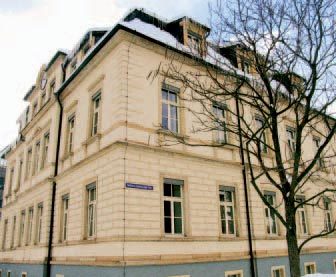
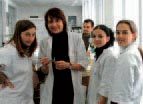
Glasshütte must be credited with some expertise in the development of the legendary balance spring. At the heart of East German watchmaking, with up to 2,500 people employed within a “Kombinat” to manufacture several million movements each year (sold inexpensively under the “Glasshütte” trademark), the town boasted several specialists in this field. Specialists whom Lange & Söhne were anxious to recruit. Moreover, the special steels designed to manufacture the balance brings were invented by Adolph Lange, founder of the brand, and are still produced in Germany. Thus rapidly mastering an otherwise very complex technique. Nevertheless, it would take nearly 10 years to achieve top-class quality. Today, Lange & Söhne is able to produce one thousand balance springs each day, giving it great independence and the scope to prepare, in secret, a stunning double split chronograph bracelet watch, a world's first debuted last year.
A school and manufactury combined
The Lange & Söhne manufactury is therefore fully comprehensive. To simplify, raw metal can be said to go in one end and come out the other end as superb quality movements which, had they been made in Geneva, would all bear the famous “Poinçon de Genève” hallmark. To achieve this, Lange & Söhne has set up its own school, established in the original Lange & Söhne building in Lange Street, right in the centre of Glasshütte. Standing alongside the workshops is the house where Walter Lange was born. He, together with Günter Blümlein, the CEO of IWC, relaunched the brand in the early 1990s. Bought back from the municipality, which had expropriated it in 1948, and fully restored, this magnificent house accommodates an average of 25 youngsters who, for three years, are taught the craft of watchmaking before joining Lange & Söhne. So sought-after is the training that many turn up for the entrance exam but few manage to get into the school. This, despite the fact that the Communist GUB (Glasshütter Uhren Betriebe) school still exists and admits many students, Glasshütte being home also to the “Nomos”, “Union” and “Glasshütte Original” brands. These students are well aware that the standard of training is very high at Lange & Söhne and opens doors for them.
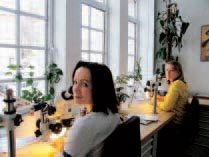
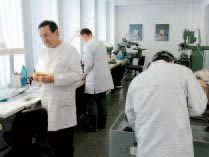
2
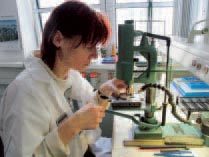
3
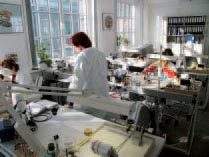
4
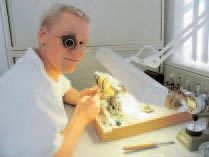
5

6
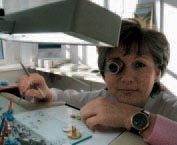
7

8
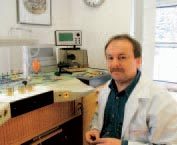
9

10

11
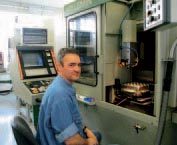
12

13

14
1. The engraving workshop where watch cases are decorated according to the special requests of customers: Daniela Schwarzbach and Antje Schaar.
2. As part of its after-sales service, Lange & Söhne rebuilds old gold pocket watch cases. A workshop headed by Reiner Pellmann.
3. The bottom plate of each movement is beautifully decorated with a stippled pattern. These are hand-made by Elke Weller.
4. Each component part of the movement (often several hundreds) is completely polished by hand, which not only enhances its beauty but protects it effectively from corrosion.
5. Michael Bettacala.
6. Beate Weber.
7. Lange & Söhne movements are systematically assembled twice. Once to calibrate and adjust all the parts, after which they are dismantled, decorated, thoroughly cleaned, oiled and reassembled. The bottom plates are in fact in “German silver”, an alloy of copper, zinc and nickel which, although beautiful and non-magnetic, is extremely sensitive to external agents, showing up the slightest smudge, hence the need for this double operation. Kerstin Richter is working on the second assembly.
8. There is often a family atmosphere at Lange & Söhne. In the movements design office, for example, father and son are found working side by side: Helmut and Burkhard Geyer. Young Burkhard was even a student at the Lange & Söhne watchmaking school.
9. The prototypes workshop is a secret place where photographers are not allowed near the workbenches. It is headed by Rudolf Udo.
10. Famed for the quality of its chronographs, including the “Double split”, Lange & Söhne pays special attention to their assembly in a workshop devoted entirely to them. Simone Postrach is one of the specialist watchmakers involved.
11. Lange & Söhne makes its own balance springs, for the “Double Split” chronograph among others, in a specialist workshop where the metal is first drawn to the fineness of hair before being rolled and heated in a furnace. Young Stephan Resch, a former student of the Lange & Söhne School, works under the supervision of two metal engineers, Reiner Kocarek, head of the department, and Lutz Grossman.
12. With ultramodern machines at their disposal, the mechanical workshops of Lange & Söhne produce all the elements needed to manufacture the movements. Here, Matthias Püschel is inspecting one of dozens of machines.
13. Fabian Krone, CEO of Lange & Söhne, in the company of Arnd Einhorn, Public Relations Manager, in front of one of the five Lange & Söhne buildings at Glasshütte.
14. Hartmut Knothe, Managing Director, in charge of production.







